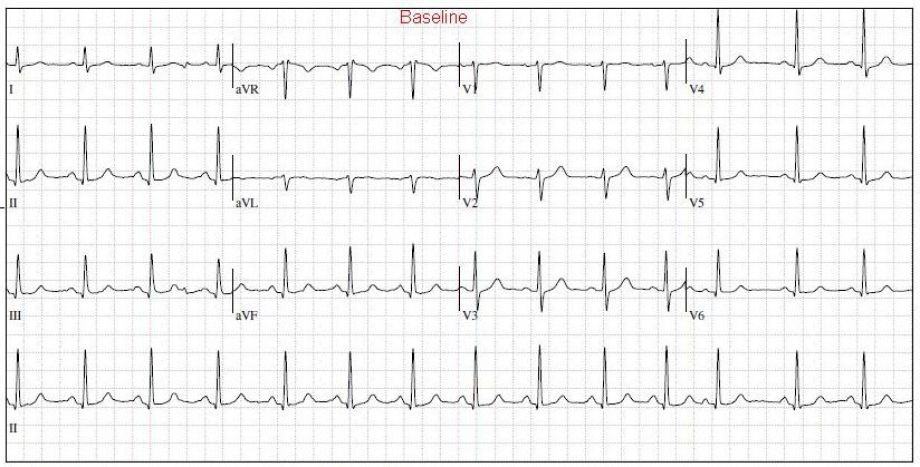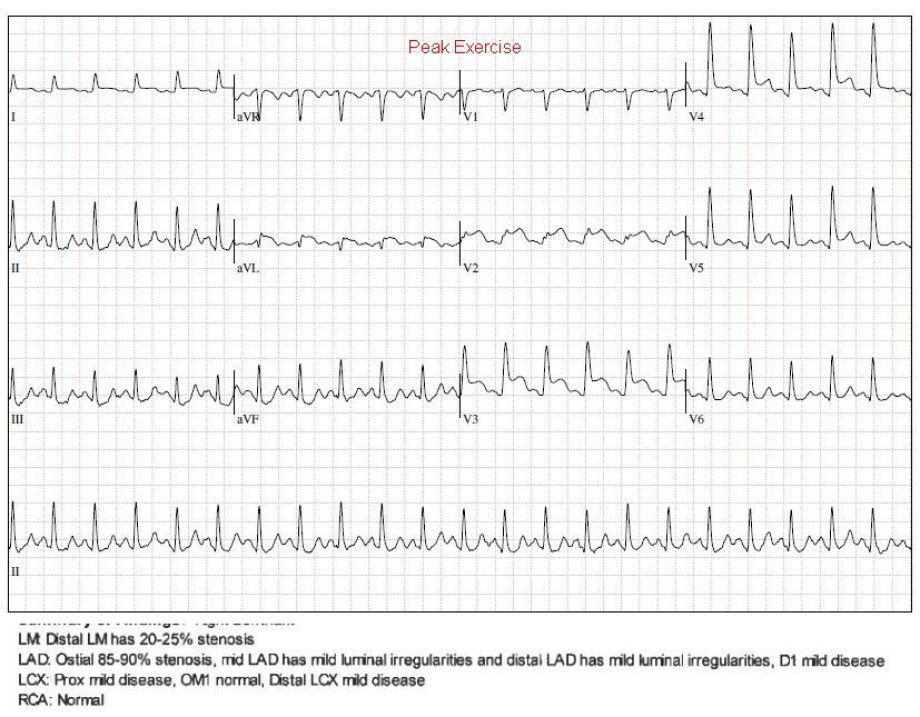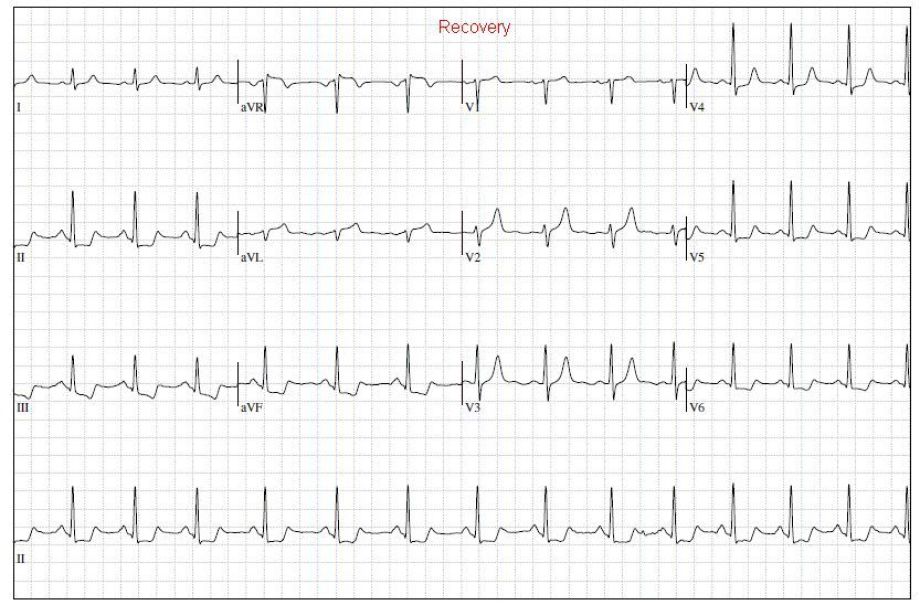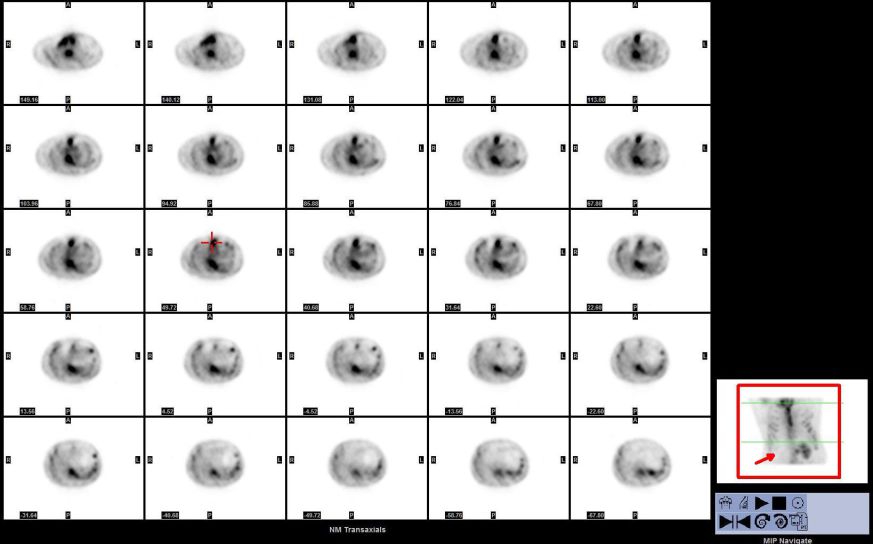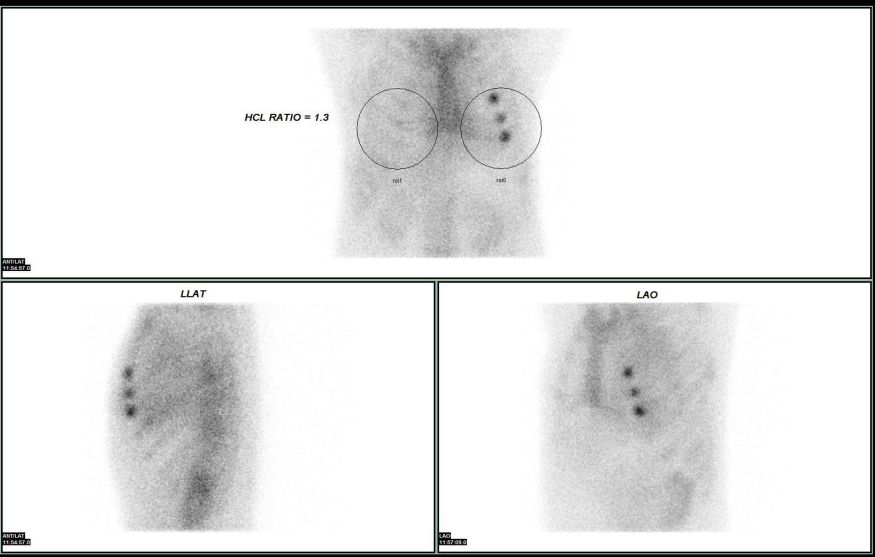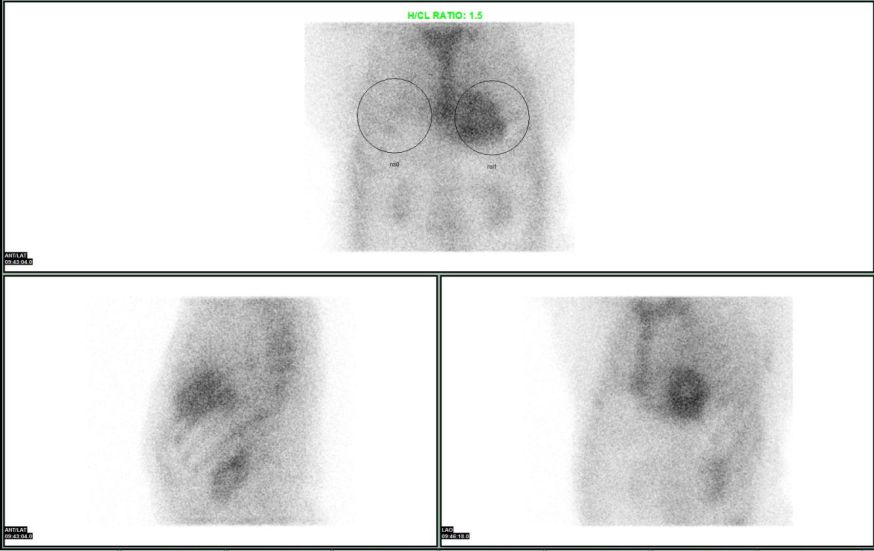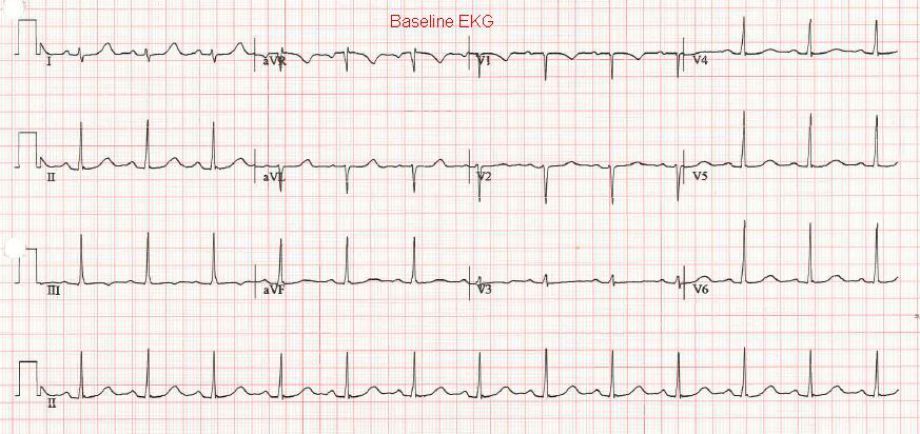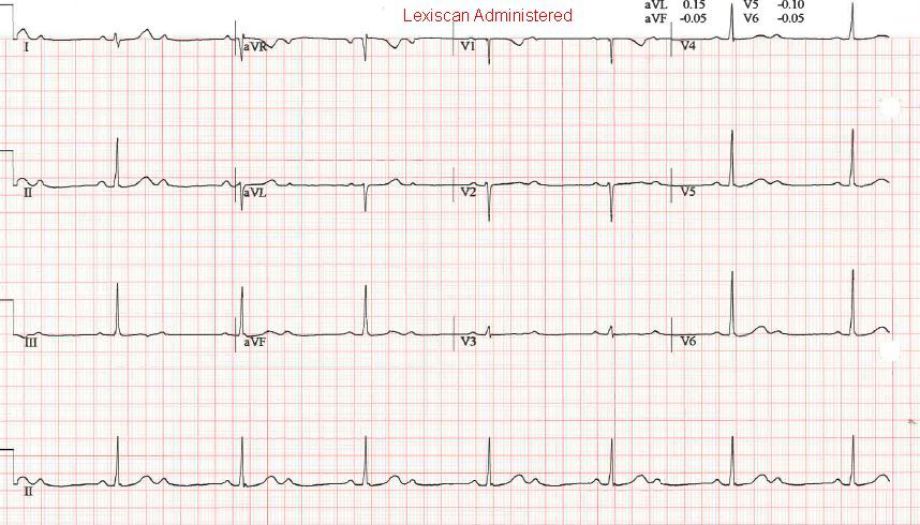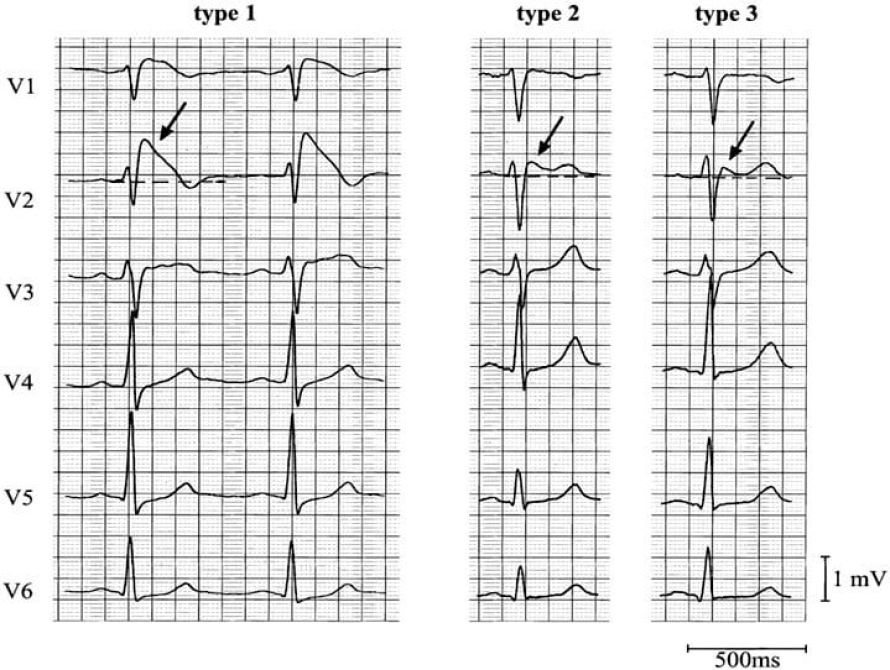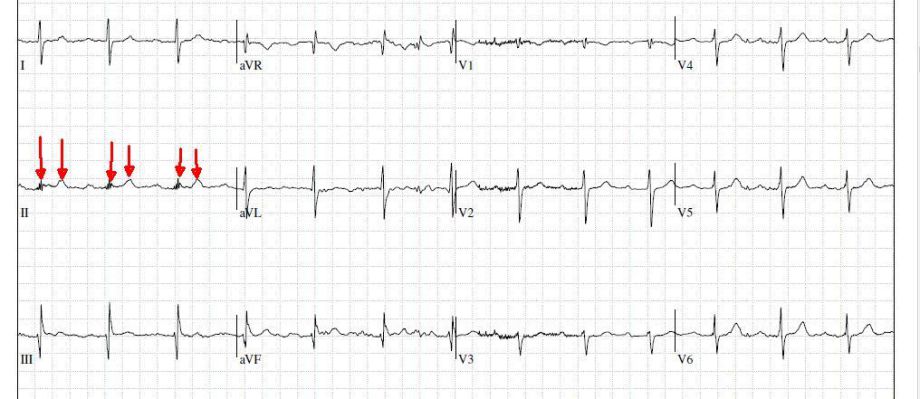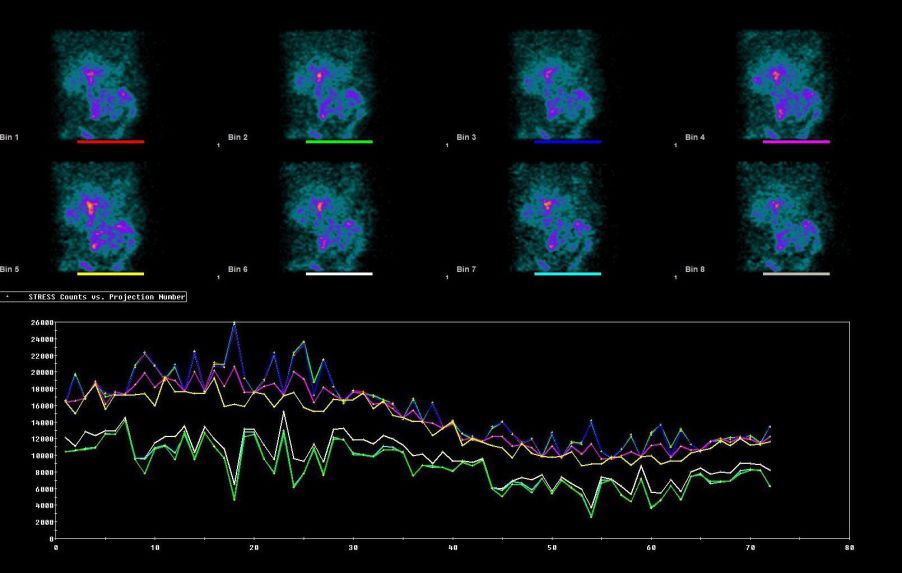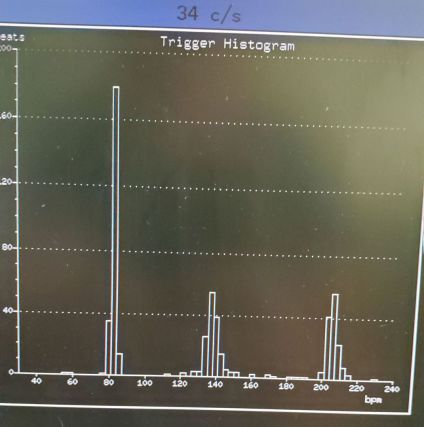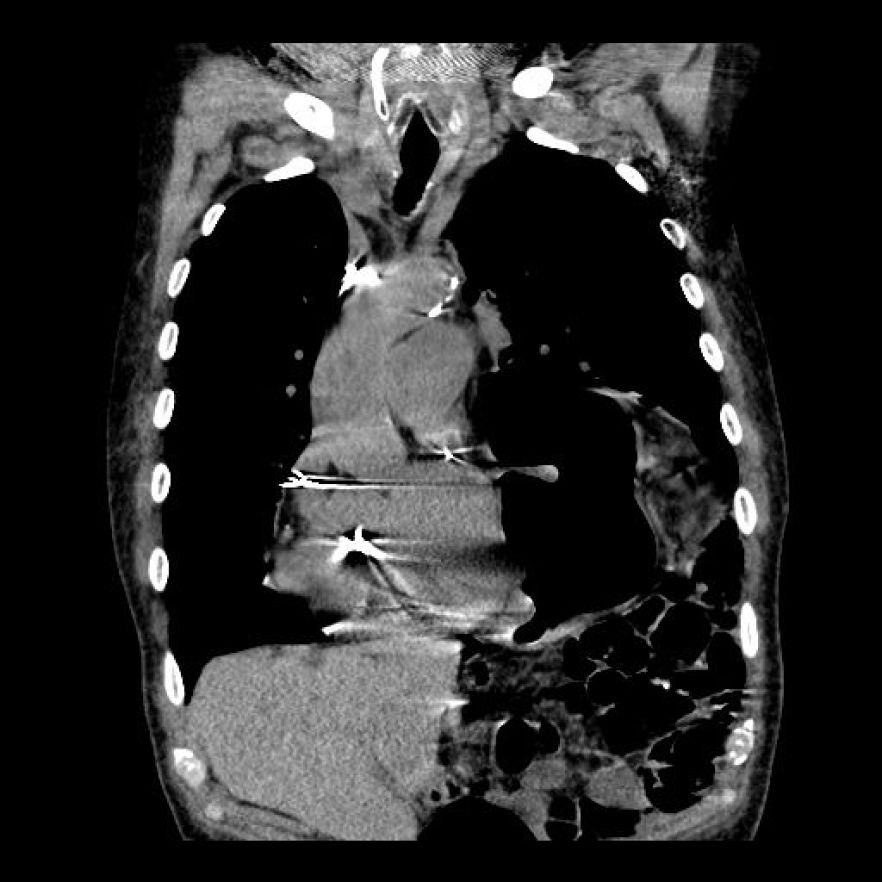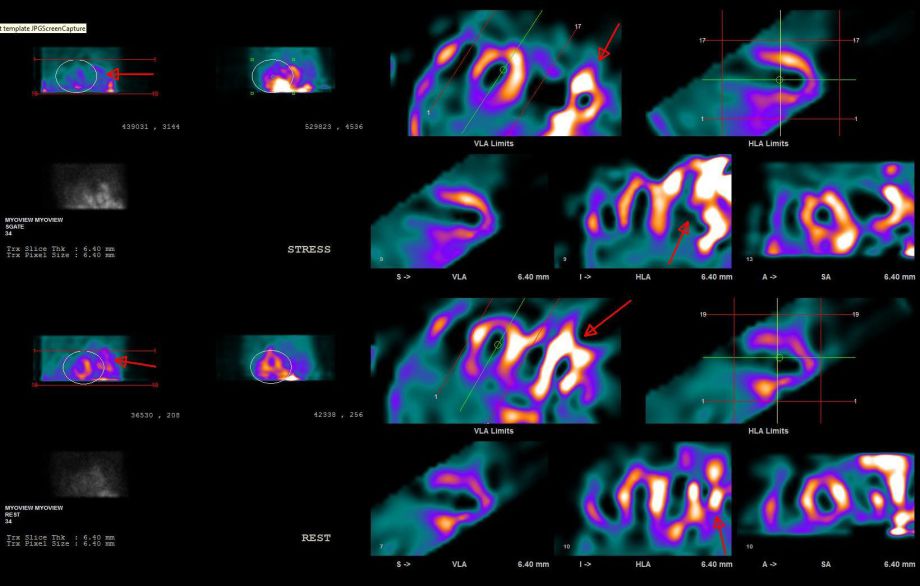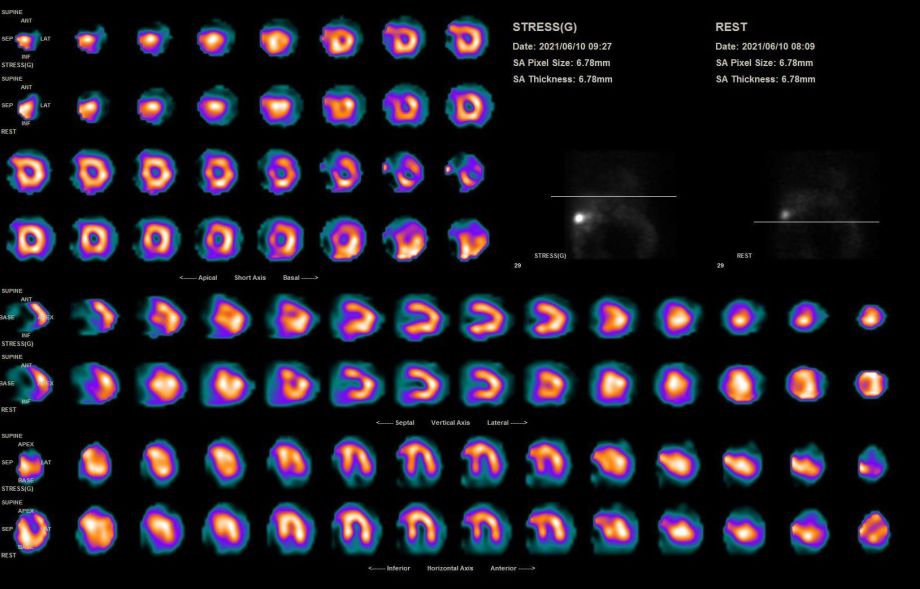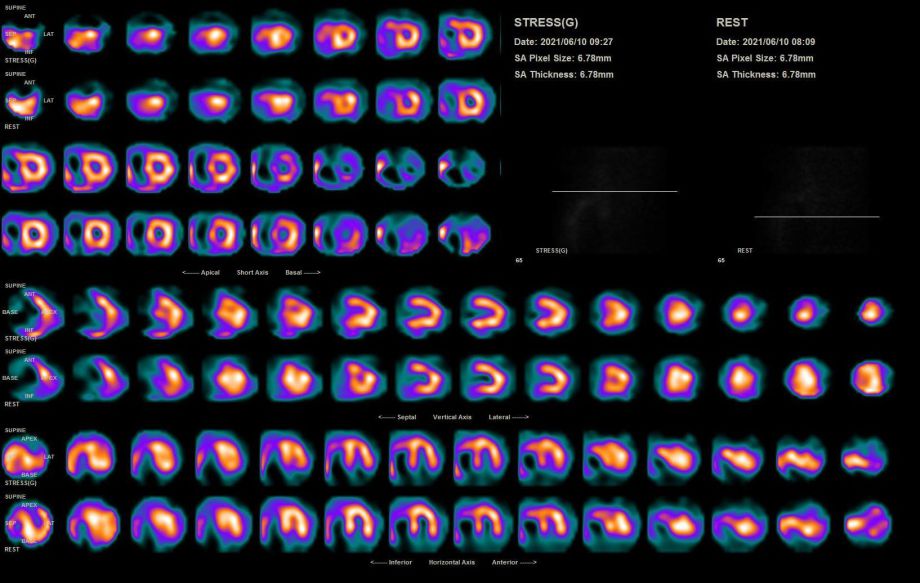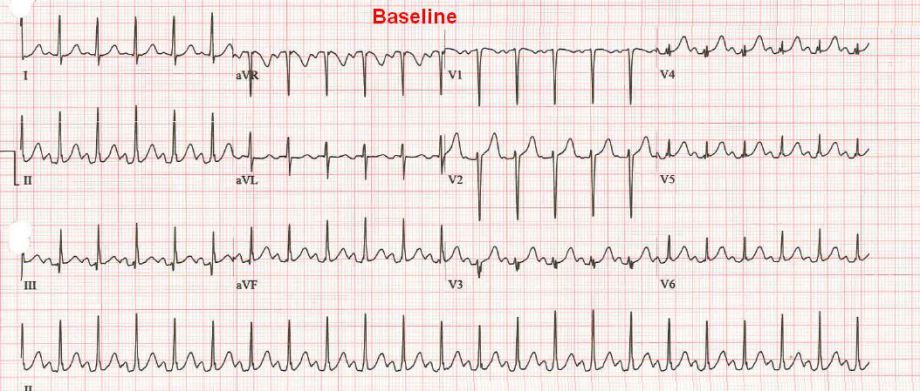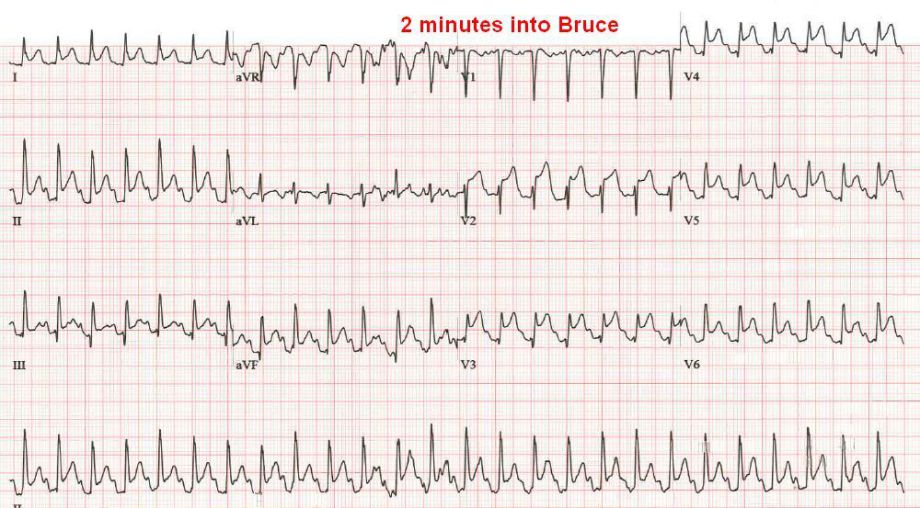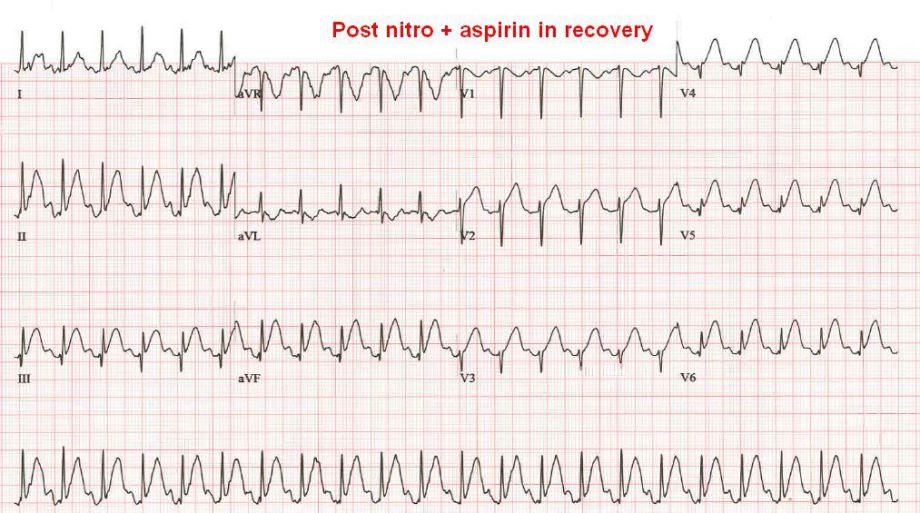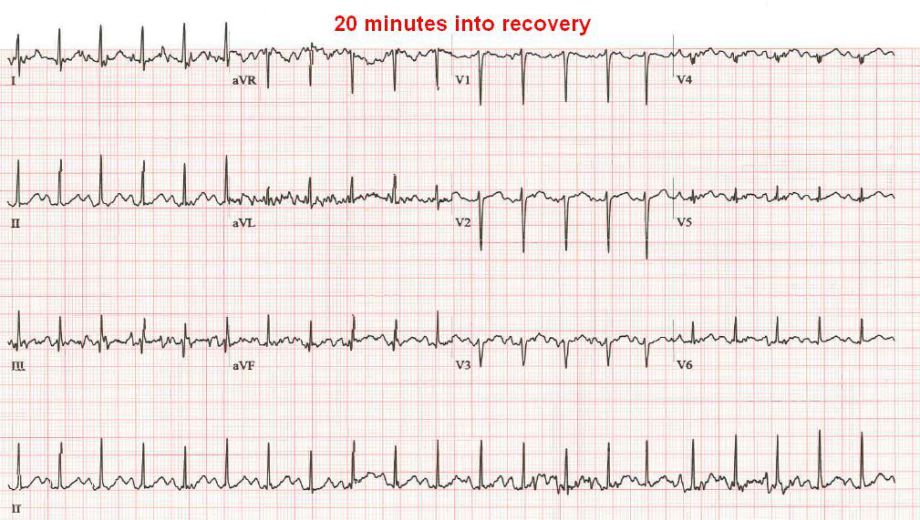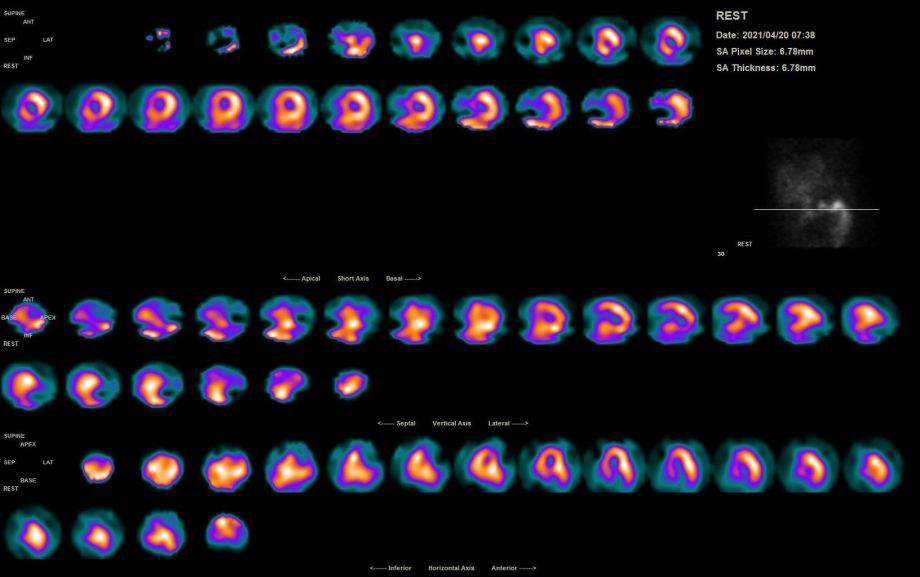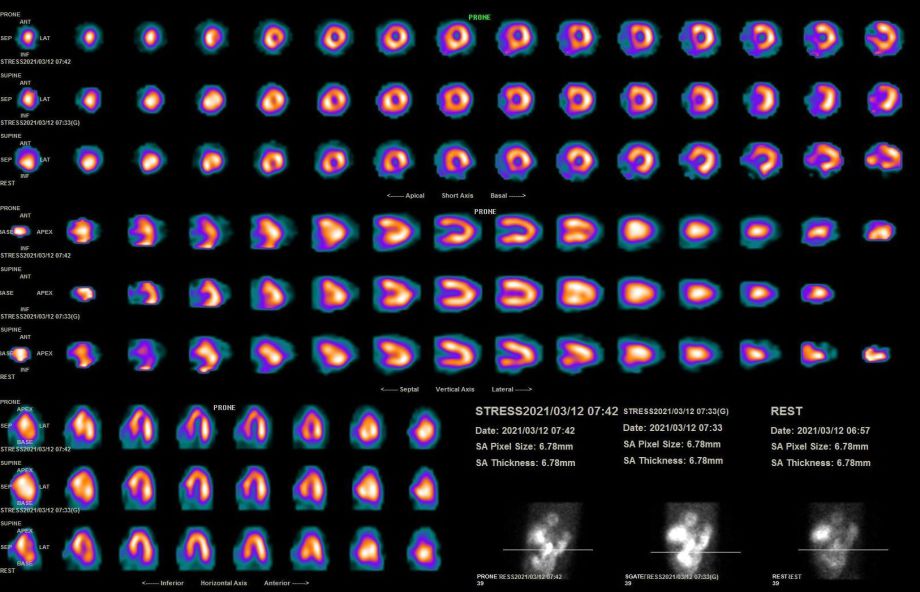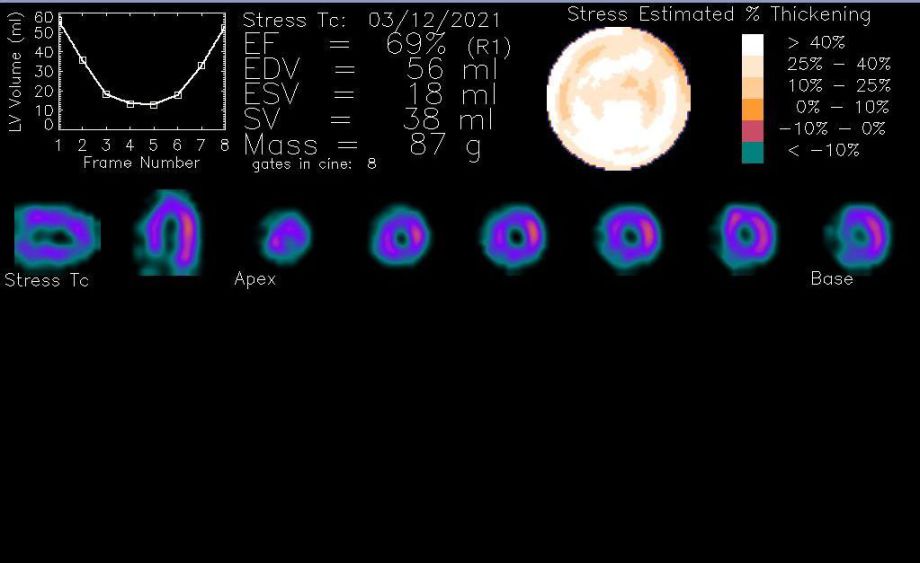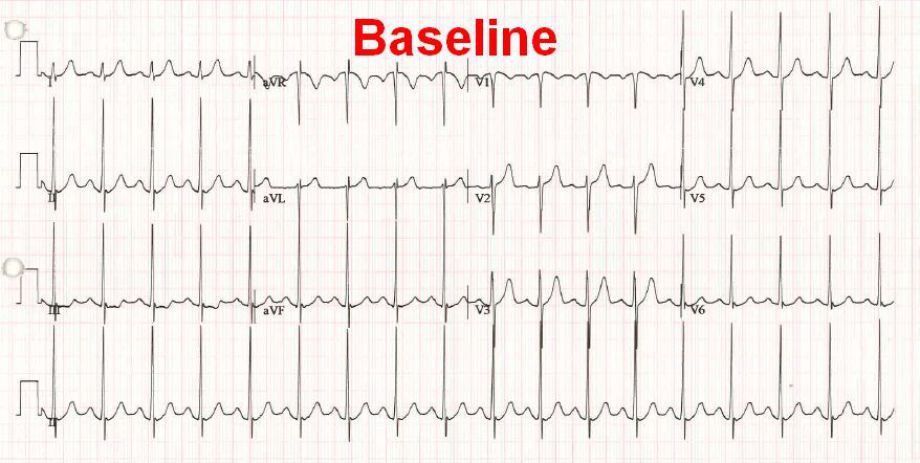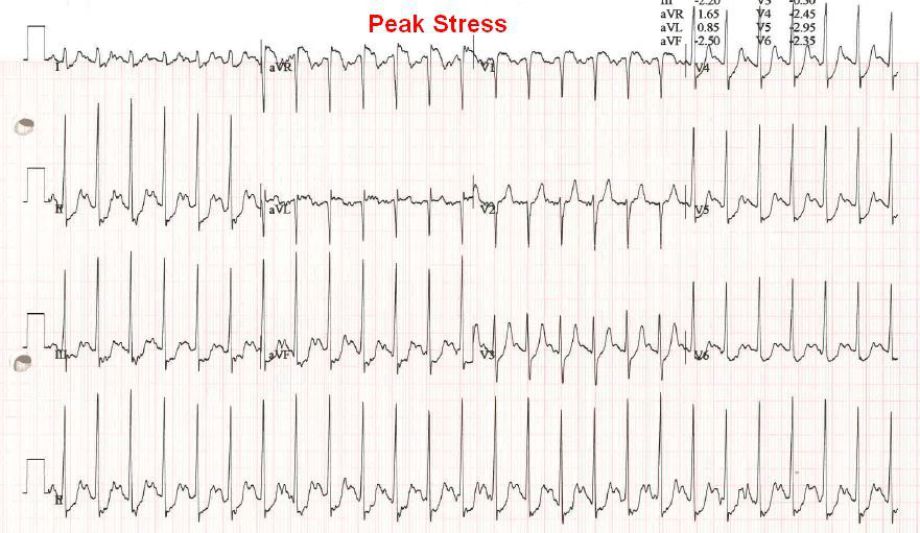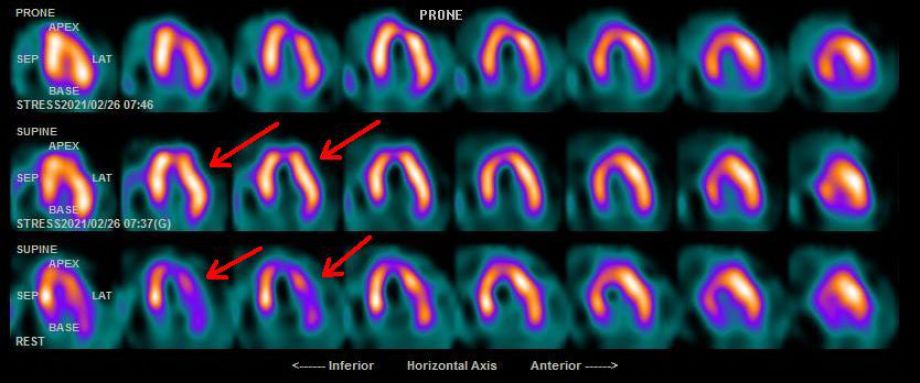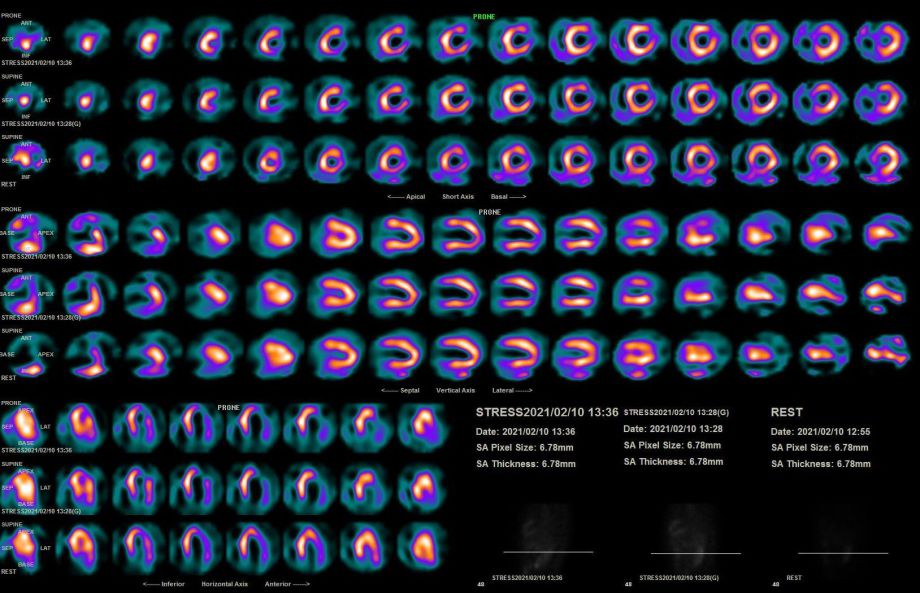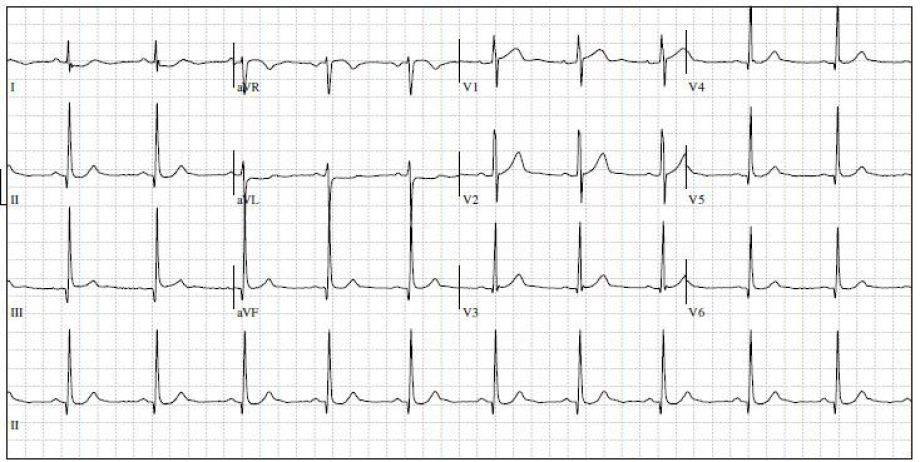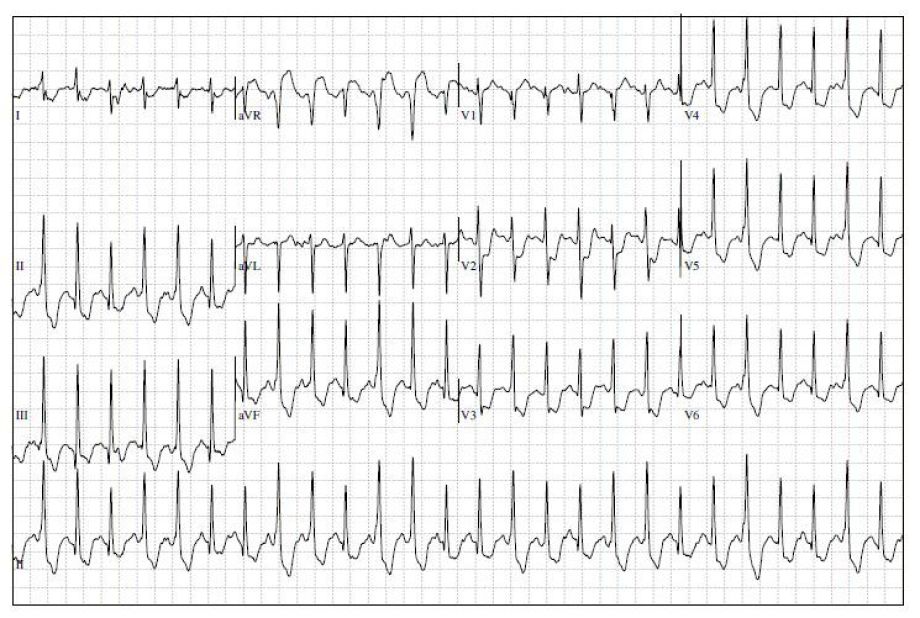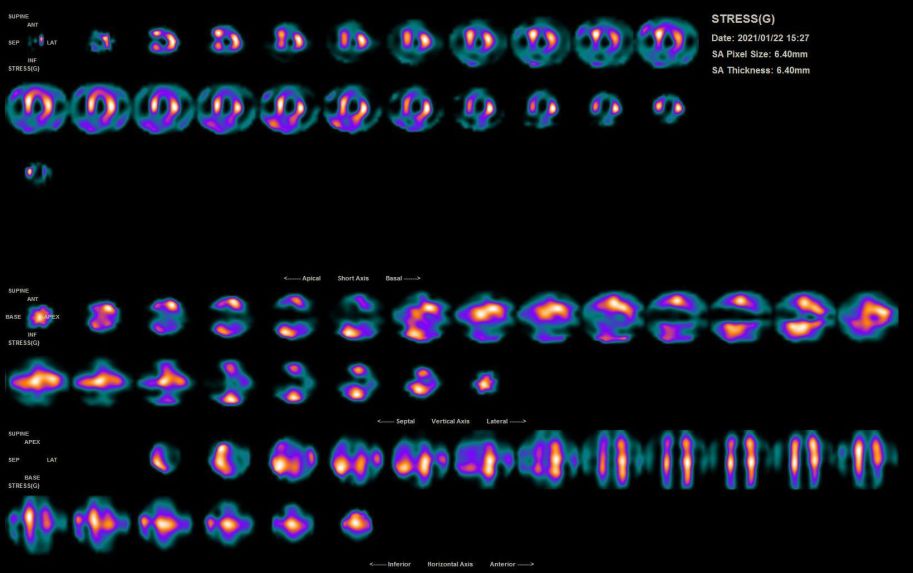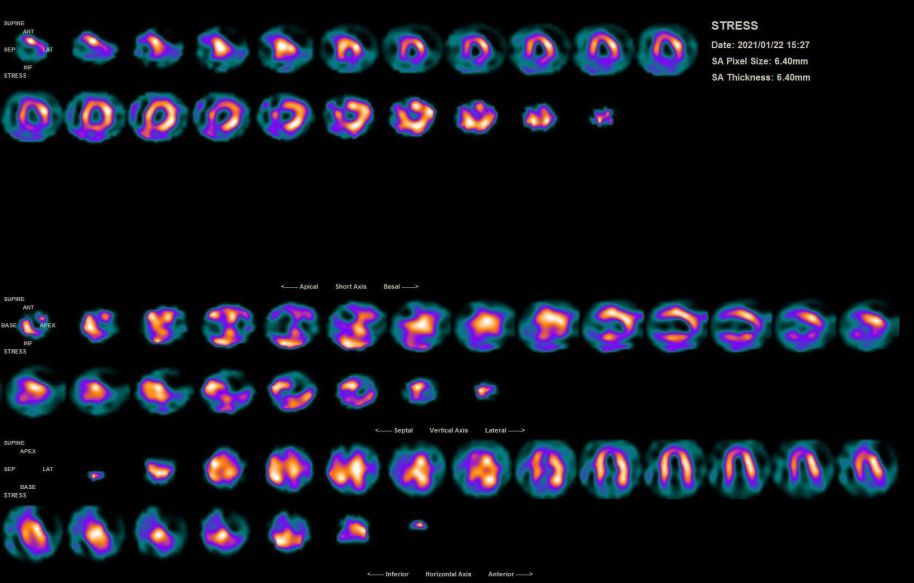2021 Blog Entries
12/12/2021
What you don't want to see while exercising a patient - ST elevation. This 66 y/o male was 1:46 into Bruce protocol when they started experiencing severe chest
pain. Risk factors include hypertension, hyperlipidemia, and prediabetes. Cardiac catheterization showed a 85-90% ostial stenosis in the LAD.
11/19/2021
This article delves into how routine caffiene consumption lowers the PCSK9 proetien in
our blood streams which could potentially lower ones risk of cardiovascular disease.
It would be interesting if there was a direct comparison of PCSK9 levels between those with a high daily coffee intake versus those taking Repatha/Praluent
without any coffee intake.
Something tells me Amgen/Sanofi wouldn't fund the study!
10/27/2021
With Vyndamax and Onpattro being viable options for patients diagnosed with ATTR, our Tc-99m Pyrophosphate scans have dramatically increased over this last
year.
One interesting caveat we've encountered are the number of non-cardiac findings depicted on the images. I've echoed in previous posts that it's extremely
important Technologists proactively document any uptake (or lack thereof) that falls outside the norms when post-processing.
Attached are a few interesting cases including a hard-positive (actively receiving Vyndamax), non-visualization of the right kidney, and bone uptake that
coincides with the left-sided ROI thereby artificially increasing the HCL ratio.
1015/2021
Having worked in Georgia's healthcare system for 21 years, I've routinely had to deal with the Department of Community Health anytime our practice expands or
purchases certain imaging equipment.
Since 1979 it's been enforcing CON (Certificate of need) laws that ostensibly control health care costs by restricting duplicate services and determining
capital expenditures meet the communities needs.
The effectiveness of these programs are highly debated, and are often used advantageously for political influence. For example, if an organization happens to
have an aggressively funded legal team, since all CON related documentation is available to the public, one could easily appeal another organizations application resulting in lofty legal
fees.
Personally, since the CON application requires all equipment invoices/purchases, financial statements, and build-out expenses to be documented, I use this
knowledge to leverage our own equipment/building costs.
Georgia's CON repository, dating back to 2005, can be found
here.
10/10/2021
While Lexiscan is an agonist that specifically targets the A2A receptor to induce vasodilation, it still carries an inhibitory effect on the AV node ,just not
as potent as its predecessor - Adenosine.
Here's a great example of a Lexiscan induced transient second degree Mobitz II AV block, which was eventually reversed back to sinus rhythm with
Aminophylline.
9/15/2021
A direct quote from this journal article: "Normal perfusion with low or very low MBFR is commonly encountered."
In the world of SPECT, by not having MBFR capabilities, this would equate to a false-negative.
It cannot be overstated: this statement alone should be the driving force on the importance of integrating MBFR's into the average cardiac imaging environment
- especially for SPECT where the false-negative rate is highly questionable.
With newer solid-state gamma camera's touting much higher sensitivity rates, is there a future for accurately quantifying SPECT derived
MBFR's?
9/6/2021
Do you ever wonder - how much radiation does one get from their granite countertops? Outside of the numerous sources that contribute to our background radiation exposure, naturally occurring radionuclides U-238, Ra-226, Th-232, and K-40 are well documented to be present in small concentrations, all not posing any significant radiation hazard. Check out this article on the evaluation of radiological hazars in some Egyptian ornamental stones.
8/24/2021
In April of 2017, I posted a controversial argument that low doses of radiation was in fact beneficial because of how it stimulates cellular protective
responses. Dr. Jeffry Siegel's article supporting this theory was formally published in the JNM
here.
Coincidentally enough, MIT now has free online courses available to the general public, and one of them is based entirely on Radiation. Once you get to the
33rd chapter of the course, there begins an entire discussion on Radiation Hormesis and the therapeutic qualities it has against disease, including cancer.
8/17/2021
With Regadenoson coming off patent in 2022, is there a future 'stress' successor? Thanks to the research from Dr. Rohan Dharmakumar, he's proven that by
administering controlled amounts of CO2, one can induce a hyperemic response equal-to-or-greater-than adenosine (Page 13 for comparison) when assessing for coronary artery
disease.
Could this widely available, cost-effective gas be our future stress agent of choice?
Adobe Acrobat document [3.8 MB]
7/19/2021
During my many years of experience in overseeing a busy stress lab, I've only twice witnessed Brugada Syndrome (channelopathy induced EKG abnormality). Similar
to other rare EKG abnormalities (WPW, dextrocardia, etc.), one has to pay very close attention to the subtle changes.
More information on this genetic disorder can be found here:
https://lnkd.in/dYXERx2B
7/8/2021
Nuclear derived ejection fraction was 43%, same patient's echocardiogram derived ejection fraction was 55-60%. Why the discordance? After checking the patients
bins and trigger file, it became clear that in Lead II the R-wave trigger was mistaking the T-wave as an R-wave due to them both sharing similar amplitudes resulting in the baseline heart-rate being
artificially doubled. This mixes the cardiac cycles diastolic/systolic counts which compromises the accuracy of the nuclear derived ejection fraction. Solution? Choosing a lead with more positive
R-wave amplitude prior to starting the gated acquisition. In this example, either Lead I or Lead III would have been an ideal choice.
6/16/2021
How creativity using X-rays turned 'illegal music' into an underground movement in Russia during the Cold War.
Very interesting read!
lLink to article can be found here.
6/12/2021
82 y/o male with complaints of shortness of breath during exertion. A nuclear stress test was ordered which showed a large area of peri-cardiac uptake within
the left lung. Due to the concentration of adjacent activity (red arrows), myocardial count-density was negatively impacted resulting in normalization/scaling issues. CT chest was ordered which found
severe left diaphragmatic elevation with large/small bowel patterns resulting in a mild left-to-right mediastinal shift. It was suggested the primary concern was a chronic phrenic nerve
paralysis.
6/1/2021
Don't forget that there's a right-side of the heart that's often overlooked when assessing perfusion. When post-processing your MPI's, ensure staff aren't
overly aggressive with volume masking, especially when it can possibly cover up right-sided pathology as illustrated in the attached example.
5/5/2021
'Hottest' new hobby: Collection of Uranium antique glass!
Disclaimer: No, this is not my collection.
5/1/2021
A great refresher on how myocardial perfusion can be impacted in patients with left bundle branch blocks!
4/20/2021
43 y/o 47 BMI female with chest pain on exertion. Arrived very nervous with a resting heart-rate 134bpm. Within two minutes she developed 10/10 chest pain. EKG showed significant, diffuse ST elevation. Nitro with aspirin administered. Patient was revascularized within an hour showing a 99% ostial LAD lesion.
4/16/2021
I really can't recommend this book enough! If you're a nuclear technologist or physician, this edition is practically the Bible of stress testing. Very easy to
read, with tons of current day, relevant topics that are meticulously cited. Chapter nine really opened my eyes, especially how PR depression in combination with the Ta wave impacts ST depression
accuracy.
Ellestad's Stress Testing: Principles and Practice 6th
Edition
4/14/2021
Another perfect example on why to always err on the side of clinical intuition by taking into consideration myocardial perfusion SPECT imaging's debatable false-negative rate. Here we have a 68 Y/O male for an exercise MPI. Stress EKG was extremely concerning with diffuse >2.5mm horizontal and upsloping ST depression. No chest pain noted. The patient did have EIH (exercise induced hypotension - 138mmHg baseline, to 102mmHg at peak). Surprisingly, his perfusion images and ejection fraction weren't egregiously abnormal as we were expecting, however out of clinical suspicion, the patient was scheduled for a cardiac catheterization. Subsequently, this patient did end up needing bypass.
4/11/2021
Despite PYP-Amyloid imaging taking off, chances are, you'll run into some challenges. ASNC's got you covered with a concise blog entry adding some clarity on how to best tackle them!
Cardiac Amyloid Imaging with Tc-99m PYP - Challenges and Potential Solutions
3/21/2021
Reverse redistribution patterns have been discussed since the mid 90's. The term itself when applied to Tc-99m perfusion agents like sestamibi/tetrofosmin is
somewhat of a misnomer, as it indicates reduced regional radiotracer at rest compared to stress. This occurs in a very small percentage of imaged patients with the majority of them not having
significant coronary artery lesions. So the question is: do these scintigraphic findings represent a real decrease in perfusion from stress to rest, or is it a byproduct of tracer kinetics? Unrelated
to the attached example is a JNC case study of a spontaneous coronary vasospasm induced reverse redistribution pattern.
https://rdcu.be/cfVWt
3/1/2021
Who doesn't need a cheat sheet on how to post-process MPI's with ECTtoolbox? It's always good to have a refresher knowing how to properly set your ROI's, when and when not to mask, setting your basal/apical limits, the impact of slice/volume normalization, and pointing out visual clues on your volume activity curve that could mean the difference between an accurate/inaccurate ejection fraction.
Adobe Acrobat document [3.0 MB]
2/18/2021
Are you using Sestamibi for your MPI's? There's more evidence that patients should be discontinuing PPIs for at least 3-5 days prior to their scan with the
intentions of preventing gastric wall uptake. While this isn't the first journal article to cite this, it's perhaps the most recent and thorough.
Link to the JNC article:
https://rdcu.be/cfdCx
2/4/2021
47 y/o male with a history of chest-pain. The significant ST depression persisted into recovery. Expecting cardiac cath to show circumflex disease in the proximal/OM branches.
1/26/2021
A great case study to always review your gated bins! I was asked for a second opinion on a patient's gated stress images shown in the first screenshot. Obviously something looked off, especially in the horizontal axis slices. I then reviewed the gated bins, and sure enough - we found our culprit! Luckily, when acquiring the stress gated tomos, the GE Ventri simultaneously provides a plain tomo SPECT without the gated bins. After processing, image quality is restored, however we couldn't provide an ejection fraction. Thankfully the patient had an echocardiogram the same day.
1/12/2021
iIPhone 12's have been found to temporarily disable implantable cardiac defibrillators - iPhone 12 Disable AICD's
1/2/2021
One of the best free ECG self-help guides on the internet - ECG Learning
Center


